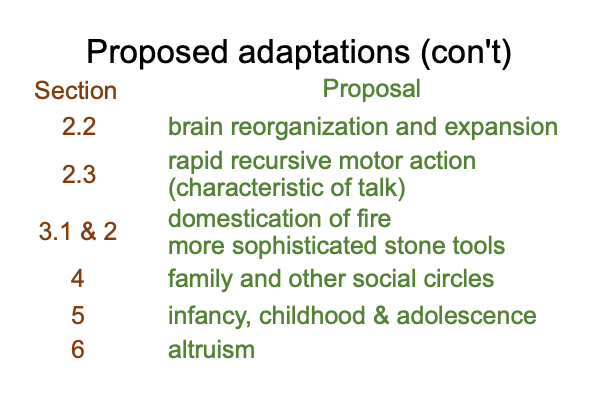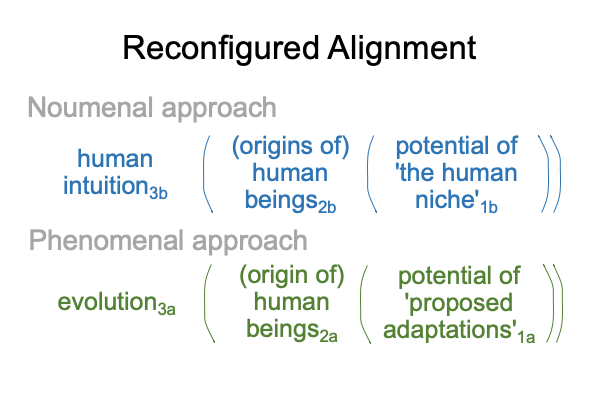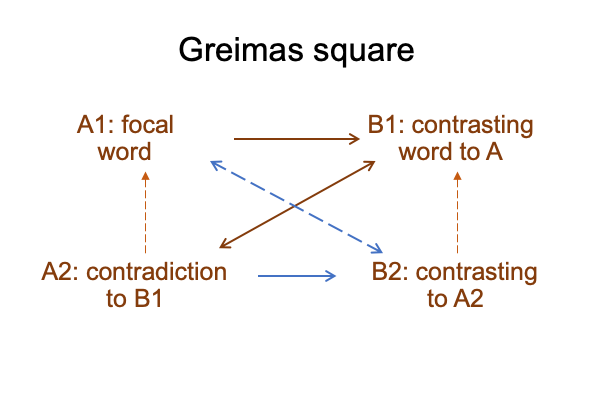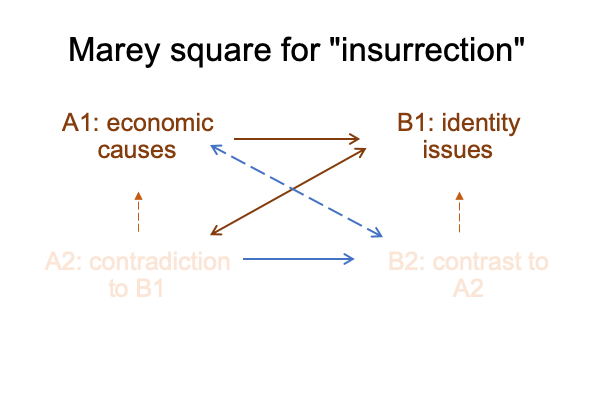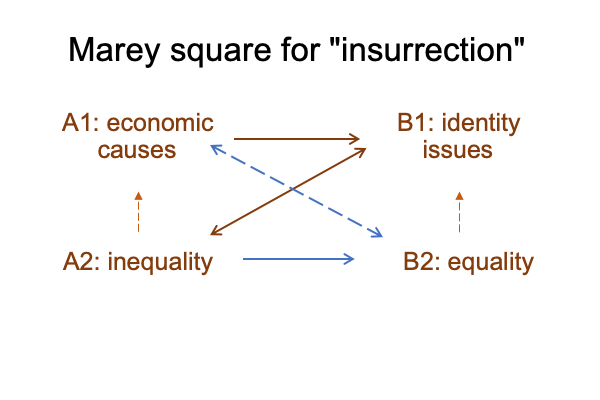Looking at Daniel Turbon’s Article (2020) “…Human Being in Evolution” (Part 8 of 11)
0036 Here are the adaptations proposed by Daniel Turbon in sections one and two of his paper, “The Distinctive Character of Human Being in Evolution”.
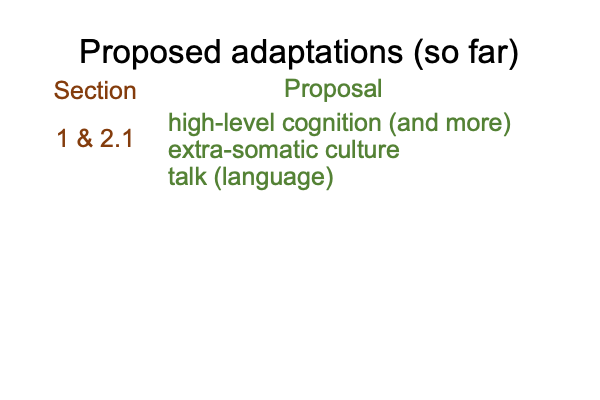
I continue.
0037 In Section 2.2, Turbon mentions brain reorganization and size increase, over very long periods of time. The parietal and frontal lobes preferentially enlarge. Encephalization increases.
There is more here than meets the eye. The brain not only increases but reorganizes. This is covered in Comments on Steven Mithen’s Book (1996) Prehistory of Mind. The way hominins think changes over many, many generations. So does the brain’s architecture.
In Section 2.3, Turbon attaches importance to the FoxP2 regulatory gene. Mutations in the gene produce impediments to speech and writing. Scientists link the FoxP2 gene to neuro-motor control of rapid recursive and coordinated actions. Neanderthals and humans share identical FoxP2 gene sequences. Turbon associates this gene to speech-alone talk. The gene equally applies to hand talk.
0038 The dyad of the brain [adapts to] talk is covered in Comments on Derek Bickerton’s Book (2014) More Than Nature Needs. Our brain to body ratio is large. It’s so large as to seem to be more than necessary for survival. But, for talking, that is a different matter.
Also, children pick up language with a paucity of clues. More cognitive processing is needed for that. The question is, “How to model linguistic communication, in order to account for how children bootstrap language use.” The answer is wrestled with in Comments on Robert Berwick and Noam Chomsky’s Book (2016) Why Only Us?
0039 In section 3.1 and 3.2, Turbon discusses a potential concurrent adaptation in the domestication of fire (starting around 800,000 years ago) and advances in stone tool technologies (starting around 500,000 years ago). There seems to be a transition, here. Why do these two extra-somatic adaptations occur in tandem?
These questions are addressed in Comments on Clive Gamble, John Gowlett and Robin Dunbar’s Book (2014) Thinking Big. Increasing neocortex size correlates to larger group sizes. Larger group sizes correlate to larger brain size. Do I detect a feedback loop? Does this feedback loop ramp up with the adaptations of cooking and hunting with composite wood and stone tools?
0040 In Sections 4 and 5, Turbon discusses the evolution of the family. Increasing encephalization means bigger heads. In order to fit through the birth canal, big-brained babies are born early. They are helpless infants. Infant helplessness should lead to higher mortality in the dangerous environment of the open savannah. The family is one adaptation that decreases risk for infants and children. So are other social circles, such as the team, the band, and finally, the community.
0041 Finally, in Section 6, Turbon discusses altruism.

